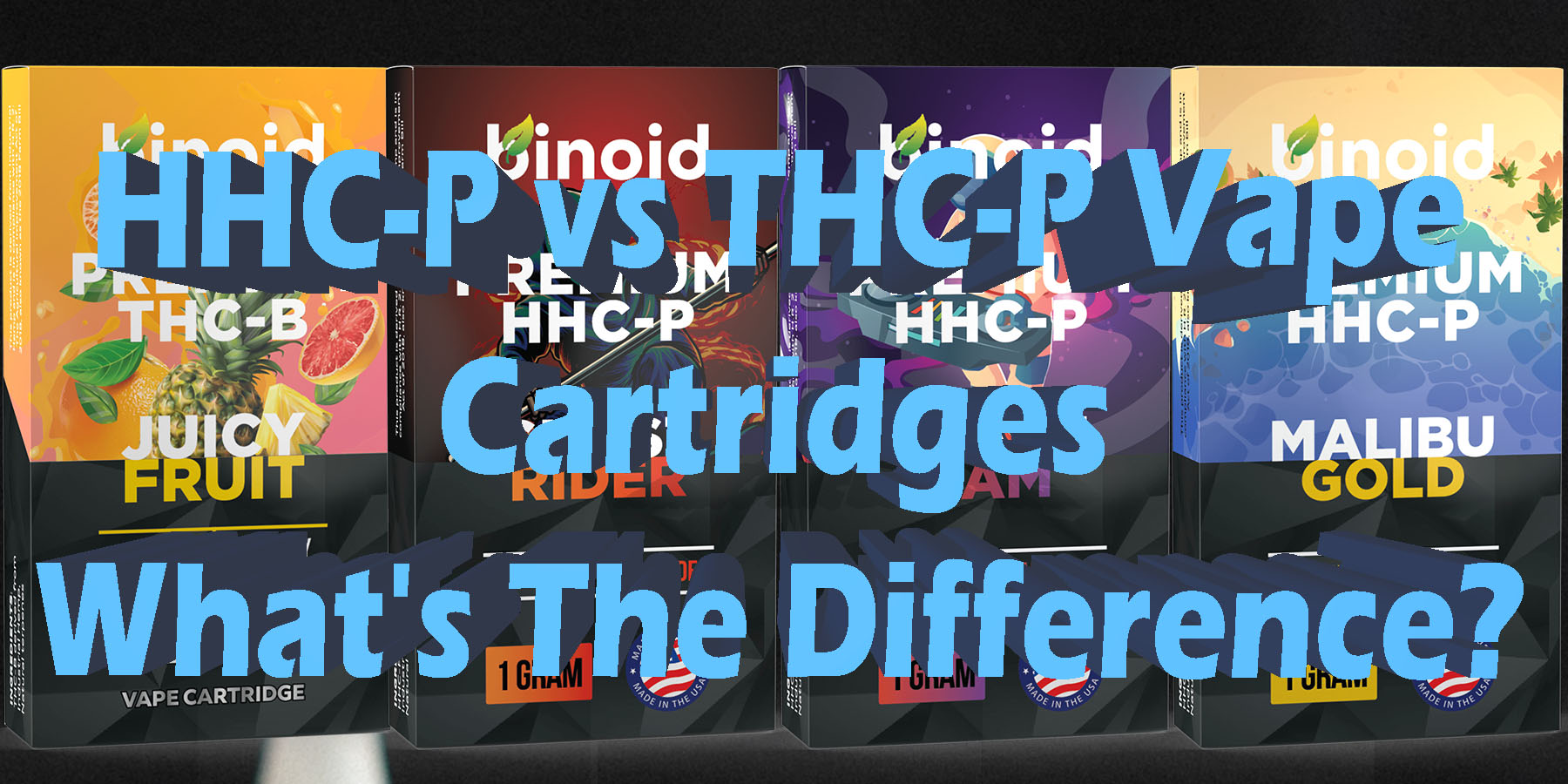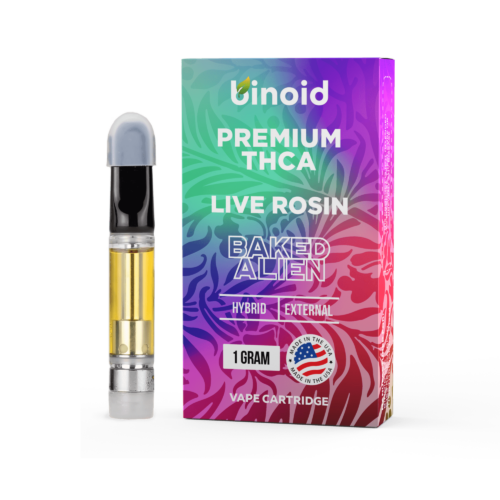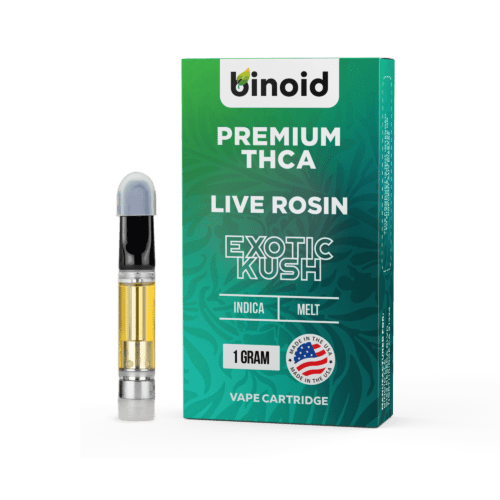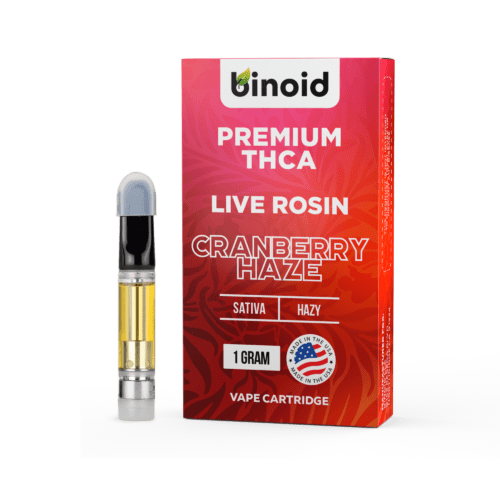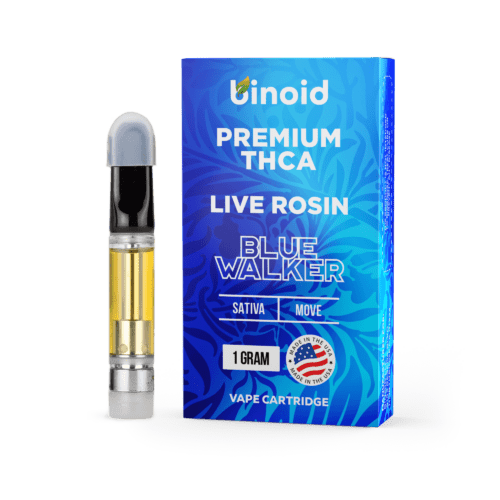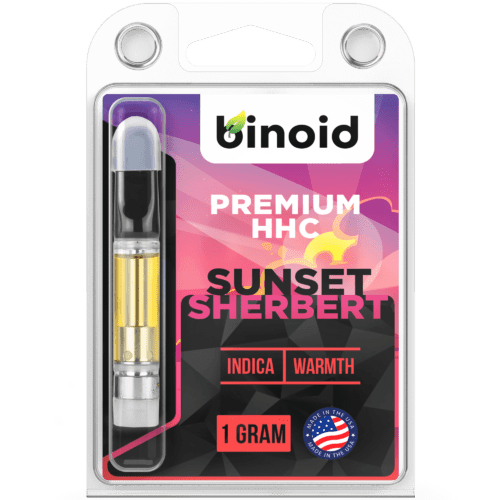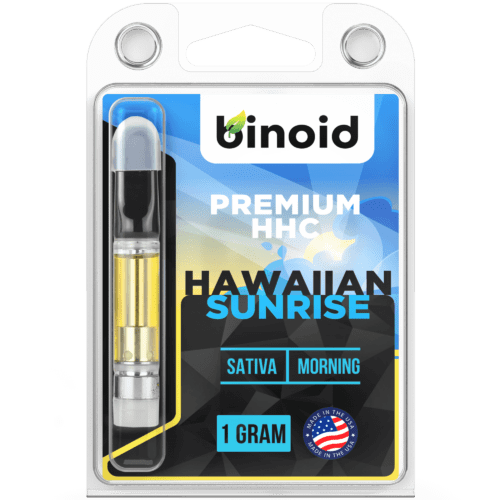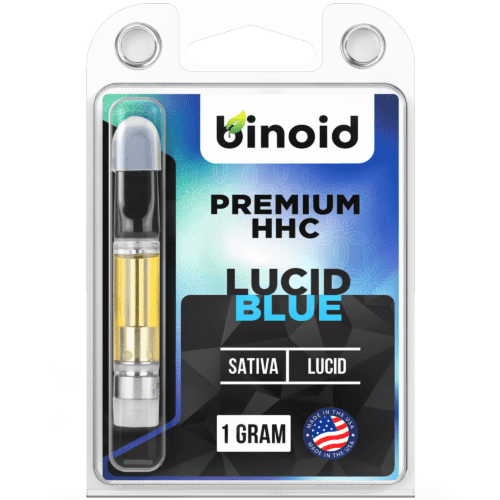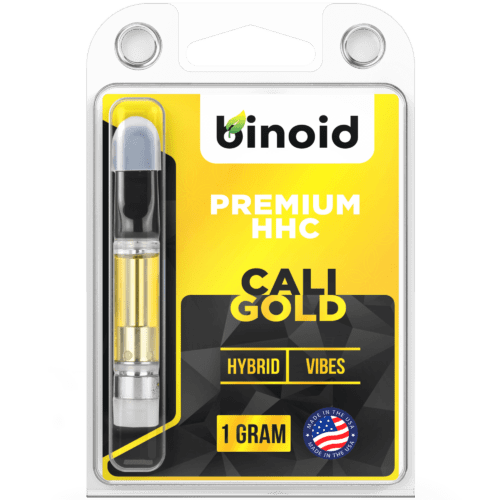In the sophisticated world of modern cannabinoids, the most compelling conversations often revolve around two key qualities: the nuanced character of the experience and the fundamental stability of the molecule itself. One defines the subjective journey—its specific shade of euphoria, its intensity, and its feel in both mind and body. The other speaks to its reliability—its resistance to degradation and its ability to deliver a consistent effect over time. Rarely do two advanced compounds embody this fascinating dichotomy as perfectly as the subjects of our current exploration, especially when delivered through the precision of a vape cartridge.
This brings us to the heart of the matter for the experienced user: the insightful comparison of THCA vape cartridges vs. HHC vape cartridges. The decision between them is not simply about potency, but about what a user prioritizes in their session. Is the goal a moment of profound, immersive bliss, or is it a sustained, well-rounded euphoria from a remarkably durable compound? Exploring the science and user experiences behind each will illuminate the answer.
To Buy Cannabinoid Vape Cartridges Click Here
Recommended products
What are Cannabinoids?
To truly appreciate the profound differences in the THCA and HHC matchup, one must first possess a firm understanding of the fundamental building blocks of their composition: cannabinoids. In the broadest scientific sense, cannabinoids represent a diverse class of chemical compounds that are defined by their ability to interact with and influence the body’s endocannabinoid system. These compounds are the primary active ingredients responsible for the effects associated with the cannabis plant, but their origins are not confined to botanical sources alone.
The scientific community generally categorizes these molecules into three distinct groups: phytocannabinoids, which are synthesized by plants (most famously, the Cannabis sativa plant); endocannabinoids, which are produced naturally within the bodies of humans and other vertebrate animals; and synthetic cannabinoids, which are created artificially in a laboratory setting. Phytocannabinoids, like the THCA and HHC we are exploring today, have a molecular structure that allows them to interface with our bodies’ internal systems, orchestrating a complex symphony of physiological responses.
The discovery and subsequent understanding of this intricate relationship are rooted in the endocannabinoid system (ECS), a crucial and sophisticated cell-signaling network. The ECS plays a vital role in regulating a vast array of functions to maintain a state of internal physiological balance, a concept known as homeostasis.
This system is composed of three core components: endocannabinoids (such as anandamide, often called the “bliss molecule,” and 2-arachidonoylglycerol, or 2-AG), which are the body’s own naturally produced cannabinoid molecules; receptors that these compounds bind to (primarily CB1 receptors, found mostly in the brain and central nervous system, and CB2 receptors, located predominantly in the peripheral nervous system and immune cells); and enzymes that metabolize and break down the endocannabinoids once they have served their signaling purpose.
Phytocannabinoids are able to produce their effects because their molecular shapes allow them to mimic or otherwise influence our natural endocannabinoids, binding to these same receptors and thus modulating cellular activity.
Within the vast family of over one hundred identified phytocannabinoids, there is a clear and important distinction between major and minor compounds, as well as a distinction between their active and acidic forms. Major cannabinoids, such as cannabidiol (CBD) and the well-known Delta 9 THC, are the most abundant active compounds and have been the subject of extensive scientific research and public discussion for many decades. In contrast, minor cannabinoids exist in much smaller, often trace, amounts. HHC falls squarely into this category.
Furthermore, most cannabinoids exist in the raw cannabis plant in an acidic form, such as THCA and CBDA. These are known as cannabinoid acids and are the biosynthetic precursors to the active compounds we are more familiar with. THCA, for example, is a major cannabinoid in its raw form, often the most abundant compound in uncured hemp flower.
This fundamental distinction between different types of cannabinoids is absolutely essential to understanding the landscape of the modern hemp industry. The 2018 Farm Bill, a landmark piece of federal legislation, federally legalized hemp and all hemp-derived products, provided they contain no more than 0.3% Delta 9 THC by dry weight. This legal framework, while sharply focused on restricting the specific molecule of Delta 9 THC, inadvertently created a massive opportunity for the scientific exploration and commercialization of other cannabinoids that could be legally sourced from compliant hemp.
This legal pathway, combined with significant advancements in agricultural breeding, chemical conversion, and purification techniques, has directly enabled the rise of products centered around compounds like the acidic precursor THCA and the hydrogenated cannabinoid HHC, empowering consumers with a sophisticated palette of experiences.
Recommended products
What are Cannabinoid-Infused Vape Cartridges and How are They Typically Created?
Cannabinoid-infused vape cartridges, often simply called “vape carts,” are small, pre-filled containers that hold a liquid formulation of purified cannabinoid distillate and, typically, aromatic terpenes. These self-contained units are meticulously engineered to attach to a compatible battery, commonly known as a vape pen or 510-thread battery, which provides the necessary electrical power to heat the liquid and instantaneously transform it into an inhalable vapor. The primary function of a vape cartridge is to offer a convenient, discreet, and highly efficient method for consuming cannabinoids.
Unlike other consumption methods that require more preparation or have a significantly delayed onset, such as edibles, vaping allows for the rapid delivery of the active compounds directly into the bloodstream through the vast surface area of the lungs. This results in effects that can be felt almost immediately, often within a matter of minutes, providing users with unparalleled control over their experience as they can take small draws and precisely gauge the effects before deciding to continue.
The marketplace for cannabinoid vape cartridges is incredibly diverse, with products available in a multitude of shapes, sizes, and materials designed to suit various consumer preferences and accommodate ongoing technological advancements. The most ubiquitous size is the 1-gram (or 1mL) cartridge, which offers a substantial amount of oil that serves as a happy medium for both regular and occasional users. However, smaller half-gram options remain popular for those wishing to sample a new strain, while larger 2-gram, 3-gram, and even 5-gram disposable vape pens have emerged for users seeking maximum convenience and longevity.
In terms of shape, the classic cylindrical design with a 510-thread connection remains the undisputed industry standard due to its near-universal compatibility with the vast majority of batteries. Yet, some brands have pioneered proprietary pod-style systems that often feature a sleeker, more modern aesthetic and a magnetic connection, although they require a specific, brand-locked device to function. The materials used in cartridge construction are also a key differentiator, profoundly impacting performance, safety, and the purity of the user experience, with a clear hierarchy from basic plastics to premium glass and ceramic constructions.
While external designs may vary, the core components of a standard vape cartridge are universal and work in precise concert to deliver a smooth, flavorful, and consistent experience. Each part plays a critical, non-negotiable role in the device’s function, from the point of contact with the user to the electrical connection with the power source. A detailed breakdown reveals the intricate design that ensures safety and proper function:
Mouthpiece: This is the uppermost part of the cartridge through which the user inhales the vapor. Mouthpieces are crafted from a variety of materials, including common options like plastic, more premium choices like heat-resistant ceramic, and stylish alternatives like metal or wood. The shape can also differ—flat, rounded, or ergonomically contoured (“duckbill”)—to enhance comfort. The material choice is not merely aesthetic; ceramic mouthpieces, for instance, are excellent at dissipating heat, ensuring a cooler and more comfortable draw.
Tank/Reservoir (Chamber): The tank is the main body of the cartridge that holds the precious cannabinoid-infused oil. It must be transparent to allow the user to monitor the remaining liquid. While some budget cartridges may use polycarbonate plastic, high-quality tanks are almost exclusively made from borosilicate glass. This type of glass is highly durable and, most importantly, non-reactive, ensuring that there is no chemical leaching into the oil, which could alter the flavor and compromise the purity of the terpenes and cannabinoids.
Atomizer/Heating Element: The atomizer is the functional heart of the cartridge, responsible for heating the oil to its precise vaporization point (typically between 300-400°F). It consists of a heating coil wrapped around or embedded within a wicking material that draws in the oil. In modern, high-end cartridges, the atomizer core is made of a porous ceramic. This technology, often referred to by brand names like CCELL, provides exceptionally even heat distribution and a larger surface area, which prevents direct contact between the hot coil and the oil. This indirect heating is crucial for preventing burning, which would create a harsh taste and potentially harmful byproducts, and for preserving the delicate and complex flavor profile of the terpenes.
Base/Connector: The base is the bottom part of the cartridge that houses the atomizer and features the threading used to connect the device to a battery. The most common type is the 510-thread (referring to the 10 threads at 0.5 mm per thread), which has become the universal standard, ensuring interoperability between most cartridges and batteries on the market. The base also contains the airflow intakes—small holes that allow air to enter and mix with the vapor—and the electrical connection point that draws power from the battery to activate the heating element when the user inhales or presses a button.
The production of a cannabinoid-infused vape cartridge is a meticulous, multi-stage process that merges precision manufacturing with sophisticated chemical science to ensure a safe, effective, and enjoyable final product. This complex journey can be broken down into three distinct parts: the fabrication of the physical hardware, the formulation of the specialized oil, and the final assembly and rigorous quality control.
Part 1: How the Cartridge Itself is Made and Constructed
The manufacturing of the empty cartridge begins with the high-precision fabrication of its individual components in specialized facilities. The borosilicate glass for the tank is molded and cut to exact specifications. The ceramic for the atomizer core is created from refined mineral powders, which are then fired at extremely high temperatures and shaped, after which the metallic heating coil is carefully integrated. The mouthpiece and base are also manufactured, often through injection molding for plastics or CNC (Computer Numerical Control) machining for metals. These separate parts are then assembled in a sterile, dust-free clean-room environment (often adhering to ISO standards) to prevent any contamination. Throughout this process, stringent quality control is paramount, with manufacturers conducting tests for air-tightness to prevent leaks, ensuring proper airflow resistance for a good draw, and verifying that the electrical connections are sound and the 510-threading is perfectly machined.
Part 2: How the Cannabinoid-Infused Vape Oil is Made
This highly scientific stage starts with legally compliant, high-quality hemp biomass. The cannabinoids are first extracted from the plant material using various methods. For stable distillates, supercritical CO2 or ethanol extraction is common. For more volatile, full-spectrum extracts rich in acidic cannabinoids, cold extraction methods using solvents like butane or propane are often used to create “live resin.” After extraction, the oil is refined. For minor cannabinoids, this may involve complex isomerization to convert a precursor like CBD into the target molecule. For major cannabinoids, it may involve distillation to achieve high purity. Finally, this purified oil is formulated, often by reintroducing carefully selected terpene profiles to create the desired flavor, aroma, and strain-specific effects.
Part 3: Bringing It All Together
In the final stage, the precisely formulated cannabinoid and terpene mixture is gently heated to reduce its viscosity and is then carefully injected into the empty, assembled cartridges. This is typically done using automated filling machines in a sterile environment to ensure dosage consistency and prevent contamination. Once filled, the cartridges are securely capped or sealed to create an airtight container that prevents any leakage. The last and arguably most critical step is comprehensive third-party lab testing. A statistically significant sample from each batch is sent to an independent, ISO-accredited laboratory. There, it is tested for potency (to confirm cannabinoid percentages), purity (to ensure it is free from residual solvents, heavy metals, pesticides, and microbial contaminants), and legal compliance (to verify the Delta 9 THC level is at or below the 0.3% threshold). Only after passing these rigorous tests is the batch approved for packaging and release to the market.
Recommended products
Breaking Down Today’s Cannabinoid Vape Cartridges Matchup: THCA Vape Cartridges vs. HHC Vape Cartridges
With a clear understanding of cannabinoid fundamentals and vape cartridge production, we can now examine the main event. This is a particularly fascinating matchup because it pits a natural precursor against a synthesized hydrogenated compound, highlighting the incredible intersection of chemistry, technology, and legality in the modern hemp industry.
This is not a simple comparison of effects, but a deep dive into two fundamentally different types of products that, through different means, have become titans of the market. On one side stands THCA, the dormant powerhouse that, thanks to the simple application of heat, transforms into the most well-known cannabinoid of all. On the other stands HHC, a uniquely stable molecule that delivers a balanced and durable experience.
Contender #1: THCA Vape Cartridges
Entering the matchup is a powerhouse that operates on a fascinating principle of chemical transformation: THCA. Vape cartridges containing THCA have exploded in popularity, appealing to consumers who seek the authentic and potent effects of traditional cannabis within the federally legal hemp market. Unlike other hemp-derived cannabinoids that offer an alternative experience, THCA offers the classic experience itself, unlocked by the simple act of heating.
These products are celebrated for delivering the familiar, powerful, and cherished effects of Delta 9 THC, because upon vaporization, that is precisely what THCA becomes. This has positioned THCA cartridges as the go-to choice for connoisseurs and experienced users who want the genuine article, leveraging a brilliant quirk of chemistry and law.
At its core, THCA (Tetrahydrocannabinolic Acid) is the direct, non-psychoactive acidic precursor to the renowned Delta 9 THC. In the living, raw cannabis and hemp plant, cannabinoids exist primarily in these acidic forms, and THCA is often the most abundant of them all, acting as the “mother molecule” from which THC is born. It is essentially Delta 9 THC with an extra carboxyl group (COOH) attached, which acts as a molecular “safety lock.”
This extra group makes the THCA molecule significantly larger and changes its three-dimensional shape, rendering it incompatible with the brain’s CB1 receptors. This fundamental inability to bind effectively is precisely why consuming raw, unheated cannabis is not intoxicating, allowing individuals to explore the properties of the raw cannabinoid acid without a psychoactive experience.
The magic of THCA lies in its transformation through a simple chemical reaction known as decarboxylation. When THCA is exposed to a sufficient amount of heat (typically starting around 220°F or 105°C), the energy breaks the chemical bond holding the carboxyl group, which is then released from the molecule as carbon dioxide.
\This process removes the “safety lock,” causing the molecule to shrink and change its shape into the psychoactive Delta 9 THC—the perfectly formed “key” for the CB1 receptor “lock.” In a vape cartridge, the atomizer coil flash-heats the oil to temperatures far exceeding this threshold, ensuring that this conversion happens instantaneously and with high efficiency.
Therefore, the entire premise of a THCA vape product hinges on this brilliant, on-demand transformation: the oil in the cartridge is federally compliant, non-psychoactive THCA, but the vapor the user inhales is potent, psychoactive Delta 9 THC.
Now, the market for THCA vape cartridges is incredibly dynamic, with a strong focus on purity, potency, and preserving the natural essence of the plant. Because THCA is a major cannabinoid in its raw form, its production methods and product types differ significantly from those of synthesized minor cannabinoids like Delta 10.
Shapes & Sizes: THCA cartridges are readily available in the most popular formats, including 1-gram and 2-gram 510-thread cartridges and all-in-one disposable vapes. The form factor is standard, but the nature of the oil inside is often a key differentiator, with many products boasting high-end extracts.
How They’re Constructed: Given that THCA products are marketed to connoisseurs seeking an authentic experience, they are almost exclusively found in high-quality hardware. This means premium ceramic atomizers designed to vaporize the oil cleanly and preserve flavor, paired with non-reactive borosilicate glass tanks. Quality construction is paramount to delivering the potent and flavorful experience users expect.
Potential Use of Live Resin or Live Rosin: This is where THCA products truly shine. Many of the most sought-after THCA cartridges are not made with a simple distillate, but with “live resin” or “liquid diamonds.” Live resin is extracted from flash-frozen plants to preserve the full spectrum of terpenes and cannabinoids, while “liquid diamonds” refers to pure, crystallized THCA that is then mixed with terpene-rich sauce. These formats offer a profoundly flavorful and robust experience that is as close as one can get to the raw flower.
Strain-Infused: The effects of a THCA cartridge (which are the effects of Delta 9 THC) are heavily directed by the terpene profile. These terpenes are almost always cannabis-derived, often from the very same plant the THCA was extracted from, ensuring a true-to-strain Sativa, Indica, or Hybrid experience. This authenticity is a major selling point for these products.
Sometimes Combined with Other Cannabinoids: While many THCA cartridges aim for purity, they are also used in sophisticated blends. The goal is often to create a more nuanced or legally compliant product.
Non-Intoxicating: It is rare to see THCA blended with non-intoxicating cannabinoids in a vape, as its primary purpose is to convert to THC.
Mild Potency: It’s uncommon to find THCA in mild potency blends, as it is inherently a high-potency product once vaped.
Moderate Potency: THCA is frequently blended with Delta 8. This creates a product that offers the powerful, classic effects of Delta 9 THC (from the THCA) alongside the smoother, relaxing body feel of Delta 8, resulting in a unique and well-rounded hybrid experience.
Strong Potency: To create the most powerful experiences possible, formulators will create blends of pure, high-potency THCA live resin or combine THCA with other potent cannabinoids like THC-P or THC-JD. These products are designed for users with the highest tolerances seeking maximum intensity.
The overall effects of a THCA vape cartridge are, simply put, the effects of Delta 9 THC. Upon heating via the vape’s atomizer, the THCA instantly converts, delivering a potent, classic, and deeply euphoric experience. Its functional aspect is its strength and familiarity; it provides the authentic psychoactive effects that have defined cannabis for generations. This core experience is then beautifully sculpted by the extract type and strain.
A live resin Sativa THCA cart will produce an energetic, cerebral, and creative buzz with an explosion of authentic flavor. An Indica THCA “liquid diamond” cart will deliver a profoundly relaxing, blissful, and body-focused experience. When blended with Delta 8, the sharp potency of the resulting Delta 9 is smoothed out, creating a more balanced and less overwhelming, yet still powerful, hybrid journey.
Recommended products
Pros & Cons
THCA vape cartridges come with a powerful set of benefits and a significant set of considerations, particularly regarding their unique legal status. Understanding this balance is crucial for any consumer.
Pros:
Authentic and Potent Effects: When vaped, THCA provides the genuine Delta 9 THC experience. For users seeking the classic, potent, and familiar effects of traditional cannabis, THCA cartridges deliver exactly that. There is no need to approximate the feeling, as the chemical conversion provides the real thing, offering a powerful and authentic journey. This makes it the top choice for purists who want an undiluted, traditional high.
Federally Legal Status (Current Interpretation): The primary driver of THCA’s popularity is its legal status. Because the product in its unheated state contains THCA and less than 0.3% Delta 9 THC, it is sold as a federally legal hemp product under the 2018 Farm Bill. This has made the effects of Delta 9 THC accessible in many states where traditional marijuana is illegal. This allows for a unique intersection of legal accessibility and potent, authentic effects.
Wide Accessibility: Due to its legal positioning, THCA vape cartridges can be purchased from online retailers and in stores in many states across the country. This provides a level of accessibility and convenience that is not possible for products from state-licensed marijuana dispensaries, which cannot cross state lines. For consumers in states without legal cannabis programs, this offers a legitimate, lab-tested avenue to access these effects.
High-Quality Extract Options: The THCA market is heavily geared towards connoisseurs, which has led to a proliferation of high-end product formats. Consumers can readily find THCA in premium forms like live resin, live rosin, and liquid diamonds, which offer a superior flavor and a more robust, full-spectrum experience compared to standard distillates. These advanced extracts preserve the natural essence of the plant for a truly gourmet experience.
Familiar Experience for Seasoned Users: For individuals with a long history of cannabis use, the effects of THCA are instantly recognizable and familiar. There is no guesswork or learning curve involved in understanding the experience. This predictability is a major advantage for seasoned users who know exactly what they are looking for in a product and want to avoid the novel effects of other, less-known cannabinoids, ensuring a comfortable and reliable session every time.
Rapid and Powerful Onset: Just like other vaped cannabinoids, the effects of vaped THCA (as Delta 9 THC) are felt within minutes. This rapid onset provides immediate and powerful effects, allowing users to quickly achieve their desired state. It also allows for careful dose titration, though the potency requires much smaller doses. This is ideal for those who want immediate results without the long wait associated with edibles.
Excellent Flavor Profiles: Because many THCA vapes are made with live resin and other full-spectrum extracts, they often boast incredibly rich and authentic terpene profiles. This results in a superior taste and aroma that is true to the original cannabis strain from which it was extracted, offering a gourmet vaping experience. The flavor is often described as more nuanced and “dank” than cartridges that use distillates with added botanical terpenes.
Synergistic and Full-Spectrum Benefits: High-quality THCA extracts like live resin contain not only THCA but also a host of other minor cannabinoids and terpenes from the original plant. When vaped, this full spectrum of compounds works together in what is known as the entourage effect, creating a more nuanced, well-rounded, and effective experience than an isolated cannabinoid can provide on its own. This leads to a more complex and satisfying high.
Cons:
Complex and Contentious Legal Gray Area: The biggest con of THCA is its precarious legal status. While sellers operate under the 2018 Farm Bill, many legal experts and some states argue that a product that becomes Delta 9 THC upon use is illegal. The legal landscape is constantly changing, and a future federal or state ruling could reclassify these products, making them subject to seizure or prosecution. This creates a significant risk for consumers.
Will Cause a Failed Drug Test: Since vaping THCA results in the user inhaling and metabolizing Delta 9 THC, it will absolutely cause a failed drug test for marijuana. The body does not distinguish between THC that came from a legal THCA product and THC from a state-legal marijuana product. The resulting metabolites are identical. This is a critical consideration for anyone subject to workplace or other forms of drug screening.
Can Be Too Potent for Beginners: The effects of vaped THCA are strong. For a newcomer or an individual with a low tolerance, the experience can be intensely overwhelming and potentially uncomfortable, leading to feelings of paranoia or anxiety. These products are generally not recommended for beginners, who would be better served by a milder cannabinoid like Delta 8 to start their journey.
Potential for Increased Scrutiny and Regulation: The explosive popularity of THCA products has drawn significant attention from lawmakers and regulatory bodies. There is a high likelihood that these products will face increased scrutiny, new testing requirements (such as “total THC” testing post-decarboxylation), or outright bans in the near future. This makes the long-term availability of these products uncertain and makes it a potentially risky market for consumers to invest heavily in.
Recommended products
Contender #2: HHC Vape Cartridges
Entering the matchup is a uniquely engineered and remarkably stable cannabinoid that has captivated the market: HHC. Vape cartridges featuring this compound have become incredibly popular for their durability and for offering an experience that many users describe as a perfect middle ground between the gentleness of Delta 8 and the intensity of Delta 9 THC. HHC (short for Hexahydrocannabinol) is a semi-synthetic cannabinoid known for its balanced, euphoric high and, most notably, its exceptional chemical stability. This has positioned HHC vape cartridges as a reliable and long-lasting choice for consumers who want a classic, THC-like experience from a molecule with its own distinct advantages.
At its core, HHC (Hexahydrocannabinol) is a fascinating hydrogenated cannabinoid, a concept that dates back to the 1940s when it was first successfully created by the pioneering American chemist Roger Adams as part of his foundational research into the cannabis plant. The process he used, known as hydrogenation, is a common chemical reaction that adds hydrogen atoms to a molecule to stabilize it—a similar concept is used to turn vegetable oil into margarine.
In the context of cannabinoids, this process involves taking a THC molecule (in the modern market, this is typically hemp-derived Delta 8 or Delta 9 THC) and subjecting it to high pressure with hydrogen gas in the presence of a metal catalyst like palladium or nickel. This forces the hydrogen atoms to break the double bond in the THC molecule’s top ring structure, effectively “saturating” it and fundamentally altering its geometry.
However, this chemical transformation introduces a crucial complexity that every HHC user must understand. The hydrogenation process creates a mixture of two different types of HHC molecules, known as epimers: (9R) HHC and (9S) HHC. The (9R) HHC epimer is the “active” molecule; its three-dimensional shape allows it to bind effectively to the body’s CB1 receptors, producing the desired psychoactive and euphoric effects. Conversely, the (9S) HHC epimer has a slightly different molecular structure that does not fit well into the CB1 receptors, rendering it largely inactive.
Therefore, the true potency of any HHC vape cartridge is entirely dependent on the ratio of active (9R) to inactive (9S) molecules in the final distillate. This explains why the effects of HHC can sometimes feel inconsistent between different products—a blend with a high ratio of 9R HHC will be significantly more potent than a more common 50/50 blend.
This seemingly simple change of adding hydrogen has one other profound impact that is HHC’s primary claim to fame: incredible chemical stability. The double bond that is removed during hydrogenation is a known point of weakness in the THC molecule, making it susceptible to oxidation and degradation over time from exposure to UV light and heat. This is why Delta 9 THC can degrade into the less potent cannabinoid CBN, losing its desired effects. By saturating this bond with hydrogen, the HHC molecule becomes a much more robust and durable compound. This exceptional stability gives HHC products a significantly longer shelf-life than their THC cousins, ensuring the oil in the cartridge maintains its potency and integrity for a much greater period.
However, the production of HHC creates a fascinating chemical quirk that is crucial for consumers to understand. The process results in a mixture of two different HHC molecules: (9R) HHC and (9S) HHC. The (9R) HHC molecule is the “active” one, binding effectively to the body’s CB1 receptors to produce the desired psychoactive effects. The (9S) HHC molecule, on the other hand, is considered largely inactive, as it does not bind well to these receptors.
Therefore, the true potency of an HHC vape cartridge is determined by the ratio of these two molecules. A product with a high ratio of (9R) HHC will be significantly more potent than a product with a 50/50 blend. This makes scrutinizing lab reports for this ratio a key part of the informed consumer’s journey.
Now, the market for HHC vape cartridges is robust and varied, appealing to a wide range of users who appreciate its balanced effects and durability. As a versatile and popular cannabinoid, HHC is available in numerous formats and blends designed to showcase its unique properties.
Shapes & Sizes: HHC is widely available in all standard cartridge and disposable formats, from the common 1-gram 510-thread cartridge to larger 2-gram and 3-gram disposable devices. Its popularity ensures that consumers can find it in whichever hardware style they prefer, making it a highly accessible option in the market.
How They’re Constructed: Because HHC distillate is a high-quality, refined product, reputable brands package it in equally high-quality hardware. This typically includes cartridges with advanced ceramic heating elements that ensure the oil is vaporized smoothly and evenly, preventing burning. These are paired with durable borosilicate glass tanks to preserve the purity and flavor of the HHC and its accompanying terpenes.
Potential Use of Live Resin or Live Rosin: While HHC itself is created through hydrogenation, it can be expertly blended with full-spectrum extracts to enhance the experience. Some premium products feature HHC distillate blended with live resin, which introduces a rich profile of natural, cannabis-derived terpenes. This creates a product with the stability and balanced high of HHC and the authentic, robust flavor of a true-to-strain live resin.
Strain-Infused: The effects of HHC, often described as a perfect hybrid of mind and body sensations, are carefully guided by the terpene profile infused into the distillate. When blended with Sativa terpenes, the experience leans towards a more energetic, giggly, and cerebral uplift. When infused with Indica terpenes, the effects are steered towards a more pronounced physical relaxation and calming body buzz, making it ideal for unwinding.
Sometimes Combined with Other Cannabinoids: HHC‘s balanced profile and moderate-to-high potency make it an excellent base or complementary cannabinoid in a wide array of blends.
Non-Intoxicating: It is not typically used in non-intoxicating blends.
Mild Potency: HHC could be used in very small amounts in a mild blend, but it is generally considered to be in the moderate potency category on its own.
Moderate Potency: HHC is frequently blended with Delta 8. This combination is popular for creating a smoother, more relaxing experience than HHC alone, with the Delta 8 providing a calming body feel to complement HHC’s more noticeable cerebral effects.
Strong Potency: To create a truly powerful and unique experience, HHC is often blended with ultra-potent cannabinoids like THC-P or THC-JD. In these blends, the HHC provides a solid, long-lasting base high, which is then amplified to a new level of intensity by the more potent additives.
The overall effects of an HHC vape cartridge are most often described as being remarkably similar to a well-balanced Hybrid strain of traditional Delta 9 THC. The core experience is one of sustained euphoria, a pleasant cerebral uplift, and a noticeable sense of physical relaxation, all working in harmony. Its functional aspect is this very balance; it allows users to feel blissfully elevated without being overly sedated or overly stimulated.
This baseline high is then customized by its formulation. A Sativa-dominant HHC blend is perfect for social gatherings or creative activities, providing a happy and engaging buzz. An Indica-dominant blend, on the other hand, is ideal for a relaxed evening, providing a deep sense of calm and comfort. When blended with potent cannabinoids like THC-P, the balanced nature of HHC remains, but the overall intensity is magnified to a powerful new level.
Recommended products
Pros & Cons
HHC‘s unique properties as a hydrogenated cannabinoid give it a very distinct set of advantages and disadvantages. A clear understanding of these is key to deciding if this stable and balanced compound is the right choice for you.
Pros:
Exceptional Chemical Stability: HHC’s greatest advantage is its hydrogenated structure, which makes it highly resistant to degradation from heat, UV light, and oxidation. This gives HHC products a significantly longer shelf-life than their THC counterparts, which can lose potency over time as they degrade into CBN. This means an HHC cartridge purchased today will retain its potency far more effectively over many months, making it a more durable and reliable long-term investment.
Effects Similar to Delta 9 THC: Many users seek out HHC because its effects are widely reported to be the closest to traditional Delta 9 THC available on the hemp market. It provides that familiar, well-rounded high with both a distinct cerebral uplift and a pleasant physical relaxation. This makes it a nearly perfect substitute for consumers who want that classic cannabis experience but live in a state where Delta 9 THC is legally restricted.
Balanced Mind and Body Experience: HHC is celebrated for its remarkably well-balanced effects, which is why it is often compared to a perfect hybrid strain. The cerebral effect is typically happy, euphoric, and uplifting without being overly racy or causing mental confusion. This is paired with a noticeable and soothing body buzz that provides relaxation without leading to heavy, immobilizing couch-lock, making it incredibly versatile for various activities.
Potency Between Delta 8 and Delta 9: For a vast number of users, HHC occupies a “sweet spot” of potency that is “just right.” It is generally considered to be stronger and more robust than the very mild Delta 8, offering a more significant euphoric experience. However, it is often perceived as slightly less intense and more manageable than a high dose of Delta 9 THC, making it an ideal step up for Delta 8 users ready for something more.
Federal Legality (Gray Area): Like Delta 8, HHC is typically derived from hemp and, crucially, is not technically a “THC” molecule. Sellers and producers operate under the argument that this places it in a legal gray area, making it a federally legal hemp product under the 2018 Farm Bill’s specific language. This legal positioning is the entire foundation of its market presence, making its desirable, THC-like effects accessible to a massive audience.
Versatile for Blending: HHC’s stable nature and balanced, moderate-to-high potency make it an excellent foundation for a wide range of sophisticated cannabinoid blends. It can be paired with milder cannabinoids like Delta 8 to smooth out the experience and enhance the body sensation. It can also be combined with ultra-potent cannabinoids like THC-P to create an intense but well-rounded high, using the HHC as the reliable base for the entire experience.
Less Anxiousness for Some Users: While it is stronger than Delta 8, many users anecdotally report that HHC produces less of the anxiousness or paranoia that can sometimes accompany high doses of Delta 9 THC. For some individuals, the high feels “cleaner” and more purely euphoric, with less mental chatter. This makes it a more comfortable and predictable choice for those who are sensitive to the edgy side effects of traditional THC but still desire a potent experience.
Rapid Onset Through Vaping: When consumed via a vape cartridge, the effects of HHC are felt within minutes, providing near-instant feedback. This rapid delivery method is especially useful for a moderately potent compound like HHC, as it allows users to carefully “stack” their dose. You can take one small puff, wait 10-15 minutes to accurately gauge the full intensity, and then decide if a second puff is needed to reach your desired level of euphoria.
Cons:
Potency Varies Based on Molecular Ratio: The hydrogenation process creates both active (9R HHC) and inactive (9S HHC) molecules. The overall potency of a product is entirely dependent on the ratio of these two compounds, but many brands do not test for or disclose this crucial information. This can lead to frustrating inconsistency, where a cartridge from one brand can feel significantly weaker than another, making it difficult for consumers to find a reliable and predictable product.
Complex Legal Gray Area: HHC’s legal status is highly contentious and unstable. While it is not THC, federal agencies like the DEA have issued statements suggesting that any “synthetically derived” tetrahydrocannabinol may be an illegal controlled substance. Since HHC is created through a chemical process in a lab, it falls into this uncertain category, creating a tangible risk for manufacturers and consumers as its legality could be challenged at any time.
Lack of Comprehensive Clinical Research: Although HHC was first created in the 1940s, it remained a scientific obscurity for over 70 years. As a result, there is a significant lack of long-term, large-scale human clinical trials on its safety, efficacy, and side effects. The modern understanding of HHC is based largely on preliminary science and anecdotal reports, meaning users are consuming it without the deep body of clinical safety data that exists for more established cannabinoids.
Likely to Cause a Failed Drug Test: Although HHC is not a THC molecule, its chemical structure is extremely similar, and it is widely believed that the body metabolizes it into compounds that are either identical or structurally indistinct from THC metabolites. Standard drug tests screen for these metabolites (specifically THC-COOH). Therefore, it is highly likely that consuming HHC will trigger a positive result for marijuana, and it should be avoided entirely by anyone subject to any form of drug screening.
Recommended products
Other Key Things You Should Know About When Choosing Either THCA Vape Cartridges or HHC Vape Cartridges
As we have established, choosing between THCA and HHC vape cartridges is a decision that requires a sophisticated understanding of their potent effects and unique chemical properties. A responsible, safe, and satisfying experience hinges on a holistic understanding of the product, from its agricultural origins as a humble hemp seed to the sophisticated hardware that delivers its vapor. The current hemp-derived cannabinoid market, while innovative and exciting, operates in a space with minimal federal oversight, which places the burden of due diligence squarely on the consumer.
So, to navigate this complex landscape safely and effectively, it is absolutely essential to look beyond the flashy marketing claims and scrutinize the factors that truly define a product’s quality, safety, and suitability for your specific needs. The following points provide a comprehensive checklist of critical considerations that every consumer should be aware of before making any purchase:
Source of Hemp: The absolute foundation of any high-quality cannabinoid product is the hemp from which its base molecules are derived. The quality of this starting botanical material directly and profoundly impacts the purity and safety of the final product, as any contaminants in the plant can become highly concentrated during the extraction and conversion processes. It is imperative to choose products made from hemp grown in the United States, where domestic farmers are subject to federal and state regulations regarding cultivation practices under the 2018 Farm Bill. Always look for brands that are completely transparent about their sourcing, preferably using hemp grown with organic and sustainable methods to minimize the risk of the plant—a known bioaccumulator—absorbing harmful contaminants like pesticides, heavy metals, or chemical fertilizers from the soil. Furthermore, it’s important to understand that the cultivation goals for hemp destined for HHC versus THCA are completely different, representing two distinct agricultural philosophies. For HHC production, which relies on a precursor cannabinoid that is later hydrogenated, the primary goal is to cultivate hemp strains that produce the maximum possible amount of clean, high-quality CBD. This CBD-rich biomass serves as the essential starting material that chemists will later convert into a THC isomer and then into HHC. The focus for these farmers is on yield and purity of the CBD, ensuring a contaminant-free starting material for a safe chemical conversion. Conversely, the cultivation of hemp for high-end THCA products is a more craft-focused endeavor. These cultivators use specialized hemp genetics that are very similar to traditional high-THC marijuana strains, with the goal of maximizing the natural production of THCA. The challenge lies in doing this while ensuring the final, cured flower contains a Delta 9 THC level that remains below the 0.3% federal limit, which requires precise harvesting schedules, careful handling, and specific curing techniques. For the consumer, this means your purchase supports different facets of the hemp industry: one focused on scalable biomass for conversion, the other on craft cultivation for direct extraction.
Third-Party Lab Testing (COAs): Third-party lab testing is the single most important factor for consumer safety, but these two cannabinoids require you to scrutinize the Certificate of Analysis (COA) for different key details. For any product, a “full panel” screening for contaminants like residual solvents, heavy metals, and pesticides is essential to verify purity. However, the potency section tells two different stories. A brand’s willingness to provide comprehensive, easily accessible, and up-to-date COAs for every single batch is the ultimate sign of transparency and commitment to consumer safety. When looking at a COA for a THCA product, the primary concern beyond purity is its legal compliance. The consumer must meticulously check two critical numbers in the potency analysis: first, that the THCA percentage is high, confirming the product is what it claims to be, and second, that the Delta 9 THC percentage is at or below the 0.3% legal limit. Some labs may also report a “Total THC” value, which is often calculated by a formula (Total THC = (THCA % * 0.877) + Delta 9 THC %). While this number gives you an idea of the final potency upon vaping, it is the standalone Delta 9 THC percentage that currently determines the product’s legal status as hemp. For an HHC product, the COA is your proof of both safety and true potency. Like with any converted cannabinoid, you must check for the absence of residual chemicals. However, the most critical detail for HHC is the ratio of active (9R HHC) to inactive (9S HHC) molecules. A standard potency test will simply group these together and report a total HHC percentage, which is not sufficient for the discerning consumer. The most reputable and transparent brands will provide more advanced testing that separates these two epimers. This ratio is the true indicator of the product’s effectiveness, and the absence of this specific data is a significant red flag that suggests a lack of transparency or quality control.
Extraction and Conversion Methods: Understanding the production method is key to appreciating the fundamental difference between these two products. THCA and HHC are brought to market through entirely different scientific pathways. One is an act of chemical preservation, while the other is an act of chemical creation and fortification. THCA is a naturally extracted cannabinoid. Because it is abundant in the raw plant, there is no need to convert it from another molecule. Instead, the goal of the extraction process is to capture and preserve it in its natural acidic form. High-end THCA products, particularly those marketed as “live resin,” often use advanced cold-extraction methods with solvents like butane or propane. The “live” designation means the plants were flash-frozen immediately at harvest, and the entire extraction process is kept at very low temperatures. This is done specifically to prevent the heat from decarboxylating the THCA into Delta 9 THC prematurely, thus preserving the plant’s full, natural profile. HHC is a converted cannabinoid, meaning it is the result of a chemical synthesis. This process, called hydrogenation, involves taking a THC molecule (which itself is often converted from CBD) and placing it in a high-pressure reactor with hydrogen gas and a metal catalyst like palladium. This reaction adds hydrogen atoms to the molecule, breaking a double bond and making it more stable. This is a sophisticated procedure that requires immense skill and, crucially, extensive post-reaction purification to ensure the final product is pure and free of any unwanted byproducts or residual heavy metal catalysts.
Terpene Profiles: Terpenes are the aromatic compounds that define a strain’s unique flavor and aroma, and they play a crucial role in modulating the effects of cannabinoids through the entourage effect. In high-quality THCA live resin cartridges, the terpenes were never removed. They are the original, natural terpenes from the specific cannabis plant that was harvested, preserved in their native ratios through careful, cold extraction. This results in a much more authentic, complex, and flavorful experience that is often described as being “true-to-strain.” This superior taste and more nuanced effect profile is a primary reason why connoisseurs often gravitate toward THCA live resin products. These extracts contain a wide array of different terpene classes, from light monoterpenes like Pinene and Limonene to heavier sesquiterpenes like Caryophyllene, all working in synergy. In most HHC cartridges, the base is a pure, flavorless distillate that has been stripped of all other plant compounds, creating a blank canvas. Terpenes, which can be derived from other botanical sources or from cannabis itself (CDTs), are then added back into this distillate to create the desired flavor and effect profile, be it Sativa, Indica, or Hybrid. While effective, this is a process of reconstruction. While a high-quality HHC cart with added CDTs can be very flavorful, it is an approximation of a strain’s profile, whereas a THCA live resin cart is the strain’s profile, captured in its natural state.
Cartridge Hardware Quality: The precious oil inside the cartridge is only half of the equation; the quality and safety of the hardware itself are equally critical for a positive and safe experience. The best cartridges are constructed with high-quality, inert materials like borosilicate glass tanks and advanced ceramic heating elements (e.g., CCELL technology) that ensure the oil is heated evenly and never burned. Another critical but often overlooked component is the cartridge’s seals and gaskets. High-quality cartridges use durable, non-reactive materials like medical-grade silicone to prevent leaks and ensure that no part of the hardware degrades and leaches into the oil over time, which can be a risk with terpene-rich formulations. This is particularly important when comparing these two products due to the different nature of their oils. A standard HHC distillate has a predictable, uniform viscosity. However, a THCA live resin can be much thicker and more complex, containing lipids, waxes, and other plant compounds that can cause thinner oils to clog standard hardware. Because of this, premium THCA live resin cartridges often require specific hardware with larger aperture (intake) holes and atomizers designed to handle these thicker consistencies. Using the wrong hardware can lead to constant clogging and can ruin an expensive, premium oil, so reputable brands will always match their extract to the appropriate hardware.
Your Personal Tolerance: Understanding your own body and your unique tolerance level is absolutely fundamental to having a safe and enjoyable experience, and this matchup is for the intermediate to advanced user. It is a critical point of differentiation that the user must be brutally honest with themselves before making a purchase. HHC, with its potency often reported to be between that of Delta 8 and Delta 9 THC, is an excellent choice for an intermediate user or someone with a moderate tolerance looking for a classic, balanced high. It provides a robust and satisfying experience that is a noticeable step up from milder compounds. THCA cartridges, on the other hand, are suitable only for experienced users with a moderate to high tolerance for traditional Delta 9 THC. Since THCA converts directly to Delta 9 upon heating, the end effect is potent and can be extremely intense for those not accustomed to it. A newcomer who starts with a THCA product is at a very high risk of an overwhelmingly powerful and potentially uncomfortable experience, including feelings of intense unease or paranoia. This cannot be stressed enough: THCA vapes are not for beginners.
Desired Experience: The choice between these two potent cannabinoids comes down to the specific character of the high you are seeking. It’s a choice between a unique, novel high and the authentic, classic high. The decision-making process should be deliberate and intentional. Are you seeking a balanced, versatile, and classic “hybrid” feeling that provides both a pleasant cerebral uplift and a comfortable body buzz? An HHC cartridge is designed to deliver exactly that reliable and well-rounded experience, often with a smoother mental state than traditional THC. Conversely, are you seeking the powerful, classic, and authentic psychoactive experience of traditional Sativa or Indica cannabis, with all of its signature potency, depth, and intensity? A THCA cartridge is designed to deliver exactly that. It is the choice for users who want the “real thing” and are prepared for the powerful and all-encompassing effects that come with it. Aligning the cannabinoid with your desired outcome is the most important decision you will make.
The Importance of the Battery (Vape Pen): The cartridge is only one part of the vaping system; the battery you pair it with significantly impacts the overall performance and experience. This is especially true for high-end THCA live resin cartridges, which are rich in flavorful but extremely volatile terpenes that can be easily destroyed by excessive heat. Using a quality battery with variable voltage settings is essential for these premium products. A low temperature setting (e.g., 2.5V-2.8V) will preserve the delicate terpene profile and provide the best possible taste, allowing you to experience the full, nuanced flavor of the strain. Using a high voltage will produce bigger clouds but will instantly burn off the most delicate terpenes, degrading the quality of the experience and wasting the product. For a standard HHC distillate, there is more flexibility, but a lower voltage is still recommended for the best taste.
Legal Landscape: As this cannot be stressed enough, the legal status of hemp-derived cannabinoids is extraordinarily complex, and these two exist in a gray area for different reasons. HHC’s legality is based on its status as a distinct hydrogenated compound from Delta 9 THC, created from legal hemp. Its legal challenges often stem from the “synthetically derived” debate with the DEA. THCA’s legality, however, hinges on a different argument: the fact that the oil in the cartridge is, by chemical definition, not Delta 9 THC and is therefore compliant with the 0.3% limit. This makes THCA particularly vulnerable to regulations based on “Total THC”, a testing methodology that some states are adopting. This standard requires testing the product for its potential Delta 9 THC content after heat is applied (post-decarboxylation). Under a “Total THC” rule, nearly all high-potency THCA products would be illegal, making their long-term availability much more precarious than that of HHC.
Brand Reputation and Transparency: In an industry with very little federal oversight, a brand’s reputation and its commitment to transparency are paramount indicators of quality and trustworthiness. For HHC, a brand’s reputation is built on proving the purity of their converted distillate and showing they have removed all residual catalysts from the hydrogenation process. The most transparent brands will also provide the active-to-inactive epimer ratio. The consumer is trusting the brand’s chemical expertise. For THCA, a brand’s reputation is built on proving both legality and authenticity. They must provide COAs that clearly show a compliant pre-decarboxylation Delta 9 THC level. Furthermore, if they market a product as “live resin,” they must be transparent about their sourcing and extraction processes to prove that it is a genuine full-spectrum extract and not just a standard distillate with added terpenes. Always scour online forums and independent review sites to gauge what other customers are saying before making a purchase.
Understanding the Chemistry: Hydrogenated Compound vs. Precursor: When you buy an HHC cartridge, the oil you possess is a stable hydrogenated compound—the substance in the tank is the same psychoactive substance you will be inhaling. When you buy a THCA cartridge, you are purchasing a precursor—the non-psychoactive molecule in the tank undergoes a fundamental chemical transformation (decarboxylation) into a different, more potent molecule (Delta 9 THC) at the exact moment of use. To use an analogy, an HHC cart is like a finished, shelf-stable product. A THCA cart is like a “take-and-bake” pizza; you possess the un-cooked ingredients that only become the final, desired product when you put them in the oven (apply heat).
Proper Storage and Maintenance: To get the most out of your investment, proper storage is key, but it is absolutely critical for THCA products. Since heat is the catalyst that converts non-psychoactive THCA to psychoactive Delta 9 THC, you must store your THCA cartridge in a cool, dark place. Leaving a THCA cartridge in a hot car, on a sunny windowsill, or in any warm environment for an extended period could slowly begin to decarboxylate the oil. This not only degrades the product’s quality and delicate terpene profile but could also theoretically raise the Delta 9 THC content over the 0.3% legal limit, which would fundamentally alter the product’s legal status from “hemp” to “marijuana” in the eyes of the law.
The Nature of the Experience
The modern science of hemp has evolved into a form of chemical artistry, allowing us to choose between cannabinoids based on their fundamental character. The choice between the potent THCA and the stable HHC is a perfect illustration of this new paradigm. It’s a decision between a molecule’s raw, natural potential and a molecule that has been engineered for a specific performance. One offers a direct link to the classic, powerful, and authentic experience of cannabis, a journey that is both familiar and profound. The other provides a reliable, durable, and uniquely balanced high, a testament to the power of chemical innovation to create new and exciting experiences.
This represents a new pinnacle of consumer choice, moving beyond simple preference into the realm of true experiential curation. Ultimately, the most rewarding journey is found not just in the effect of the molecule, but in the user’s wisdom to select the precise tool that perfectly matches their intent.

